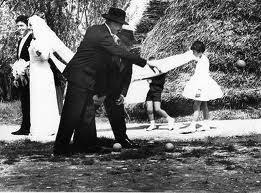What do you do while in the gym? That is apart for the more or less strenuous efforts you are making to try and keep your body in shape. I mean gym is really boring, isn't it? And who wants to listen to the mindless pseudo disco crap that some places pump at you whether you want it or not?
So I go the the gym most days with a set of headphones and an i-pod and listen to radio programmes or, mostly, to music. These are moments in the week when I can catch up with these pleasures, and doing so while pulling on ropes, pulleys, bars and weights makes me feel that I am using that time even better.
There are days when it is jazz, others when it is blues, others when I need a shot of rock to get me moving, days when I need the sound of a female voice, and so on. I had not, until recently tried classical music very much. But, the other day, I happened to press the button on a Glenn Gould recording of Bach's Toccatas and the English Suite number 4. And I now think I have found the perfect match for gym!
There is something about Bach's solo intrumental music, and its variations around themes, which makes it just right for the repetitious movements that one does on those machines in the gym. There is a relentlessness, a to and fro, a light and dark, a circling around the core of the effort that just makes it work. And the music is also incredibly solitary, just like you there trying to force your body to do stuff that it doesn't really want to, but somehow finding joy in the release once it gets into the stride. The effort of getting into Bach is very similar. The music, as played on the piano by Gould, is at first austere, then it gradually opens up infinite horizons and feelings. The same goes for your gym sessions, I am sure. Repetition is all, but every detail makes a difference.
If you cannot stand gym, try it with some Bach. if you cannot stand Bach (hard to believe but possible), try him with some gym. If that doesn't work, try something else. Meanwhile here is a gift...


















































